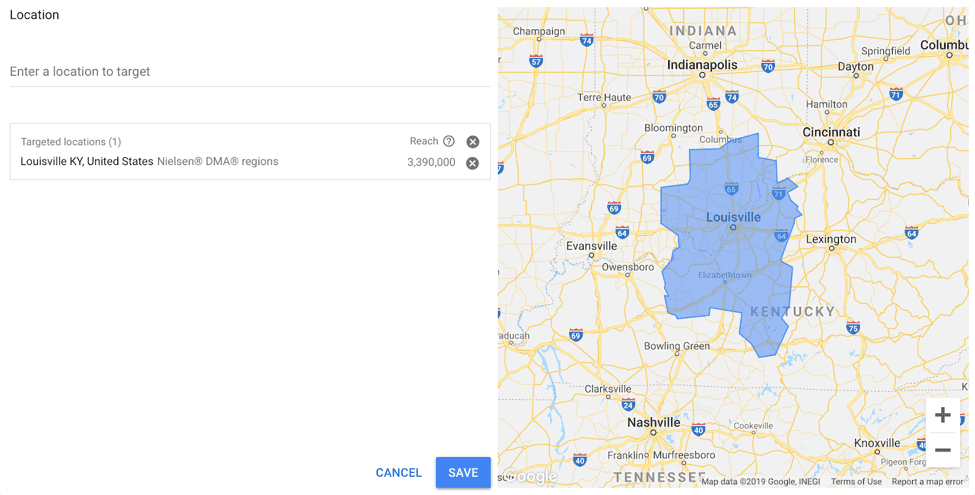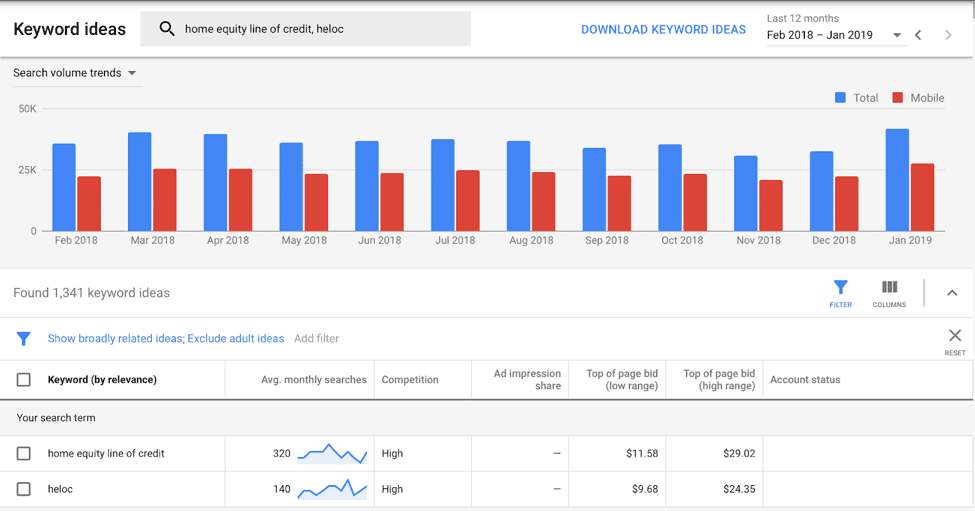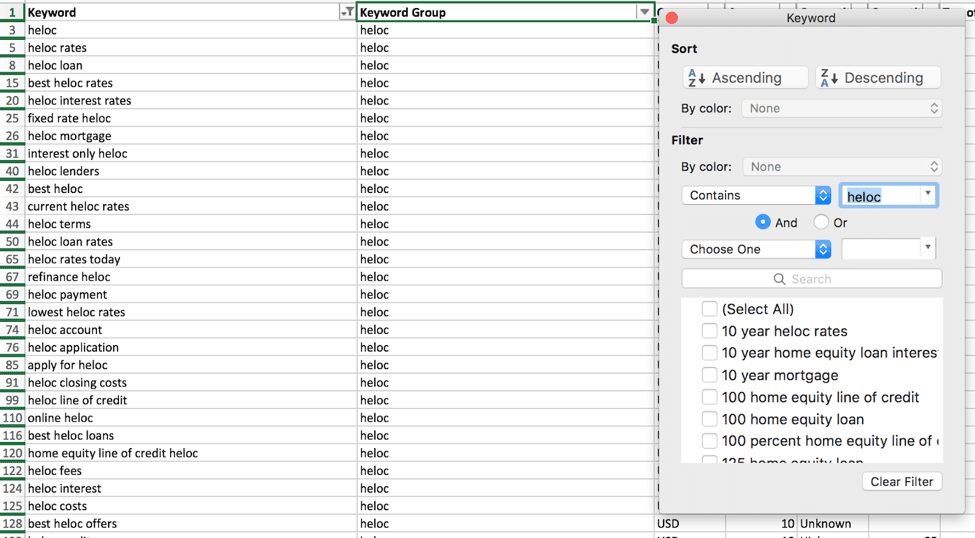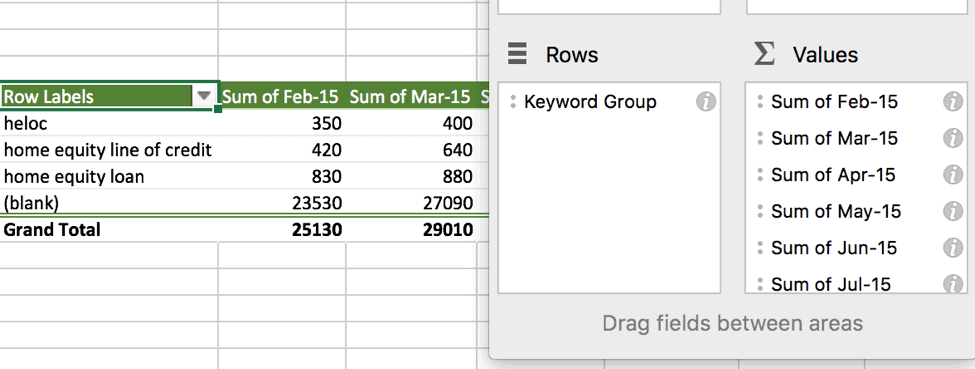We’ve been consulting with our customers on ways to use Google products to inform product promotions. A personal favorite of mine is Google’s Keyword Planner located in AdWords. Before we get into the post, let’s talk about the Keyword Planner a bit.
Google’s Keyword Planner used to just be available through a Google Search – but now there is an extra step involved. You need to have an AdWords account set up in order to gain access to it.
The good news is that AdWords accounts are free, and that the research we’re going to conduct in this post can be used to purchase Google AdWords ads, as well as help you optimize your website for search engines.
So it’s like a triple win here. With Google’s Keyword Planner you can:
- Learn when to send specific product offers based on localized search volume.
- Build a list of keywords to buy ads against and drive paid traffic to your website.
- Build the same list of keywords to ensure that your product pages are fully optimized for search.
Now that you understand how valuable this post may be to a number of your marketing efforts, let’s get into it.
Localize Your Results
The first thing that I like to do is to make sure that I set the location of the results I would like to see. The default will be United States if you’re U.S. based – but you are able to get much more granular than that.
And that’s especially important for local organizations like community banks and credit unions.
One distinct advantage that community-based financial institutions have over national or Internet-only brands is that ads cost substantially less when you’re able to localize your results. And since Onovative is located in the Derby City, I went ahead and localized the results for this post to Louisville, KY.

In general, it’s cheaper to buy ads against searches coming from Louisville, KY over searches that come from the United States and that’s because there’s typically less competition for search terms in your local area than there are across the entire country.
In the example below, the savings may not seem significant. However, the upside of only paying for clicks against searches in your local metropolitan area is huge. Also, note the differences in the “Avg. monthly searches” volume chart among local and U.S. based search volume.
Louisville, KY Volume & Cost Estimates

In order to toggle between locations toggle between locations, look for the word “Locations” in the left-hand navigation menu inside the Keyword Planner tool.
Understanding Keyword Search Volume
Now that you’re only looking at the search volume of keywords in your local area, it’s time to add some keywords to your search. There are a number of different ways that people may be searching for your products, and Google is keeping track of them all.
The Keyword Planner provides insight into these differences and creates your own custom Keyword Groups.
Start by choosing a couple of keywords that could be used for the same type of product. In this case, I kept the keyword terms “HELOC” and “home equity line of credit.”
From here, Google shows you the volume trends of the keywords that you selected.

But when you scroll down you’re going to see that there are a ton of searches that include either the terms “HELOC” or “home equity line of credit.” And if you’re paying attention, you’re going to see that they’ve also added results for the term “home equity loan,” which is also interesting to what we’re trying to accomplish here.
Now you could just stop here and call it a day. I mean, you’ve kind of pulled together some insights…
Or you can take it a couple of steps further and identify exactly when you should be sending out HELOC offers vs. home equity loan offers.
Putting it All Together (Louisville, KY HELOC Case Study)
At a high level, we’re going to want to pull data from Adwords into a spreadsheet so that we can group and pivot the data into a chart that shows us exactly when we should be promoting our home equity products.
Here’s the play by play.
The first thing we want to do is get as much data from Google as possible. Fortunately, we can do this by selecting the date range within the Keyword Planner. I chose “All Available” and the data went back four years.
This is gold.

It’s showing us the monthly search volume across the last four years, and we can manipulate this data inside of a spreadsheet. So the next step is to download the data, by clicking “DOWNLOAD KEYWORD IDEAS,” and opening it up in your favorite spreadsheet software.
I’m using Microsoft Excel.
Once you have the dataset open, add a filter across the header row, and create a new column next to your “Keyword” column. Label your new column something like “Keyword Group.”
Select your “Keyword” column and open up the filter you just made. Then create a filter that contains the term “HELOC.” Excel will return only the keyword phrases that have the term “HELOC” in them.
From here, you’re going to want to type in the word “HELOC” into the new Keyword Group column you created. In the end, it should all look something like this:

Do the same thing for the terms “home equity line of credit” and “home equity loan,” then create a pivot table of the entire dataset. If you have no idea what a pivot table is, then check out this tutorial to get up to speed.
In your Pivot Table Builder, you’re going to want to add your Keyword Group data as a Row and sum each month’s search results. It may be a bit tedious to do for the past four years but the end result is worth it.

Now that you’ve grouped this keyword data together, your last step is to create a visualization so that you can see the best time to promote these products based on four years of search data from Google.
Here’s what that might look like.

I gathered a couple of takeaways from this chart that can help us know exactly when to promote home equity-based products in the Lousiville, KY metropolitan area.
All of our terms are growing in search volume over time. This could just be a function of population growth, but it’s a good sign nonetheless. It means that people are continuing to develop search phrases that include the product that we care about.
There is a big distinction in search volume between home equity loans and lines of credit in our metro area. The way that people describe your home equity products in their Google Searches may likely vary from metro area to metro area. This could be caused by a number of local factors and is why this type of analysis is valuable at the local level.
The terms HELOC and home equity line of credit appear to be somewhat interchangeable. This is not always the case but is worth noting in Louisville, KY over the past four years. That being said, it does appear that the term “HELOC” has transitioned to be the term of choice over the past two years.
July is an amazing month to promote home equity loans. Over the past four years, there seems to be a distinct climb in searches for home equity loans beginning in June and dropping off in August.
Spring and Fall months appear to be a great time to promote HELOCs. Although last year’s trends between HELOC and home equity loan searches appear to mirror each other closely – historically it looks like you can’t go wrong promoting HELOCs in the spring and fall months.
Next Steps
Now that you have this information in hand, use it to plan out your HELOC and home equity loan promotions this year.
If you’re interested in automating your HELOC and home equity loan promotions throughout the year, then we should talk. Schedule a demo of Core iQ with me and we’ll walk through just how easy sending cross-channel communications can be.


